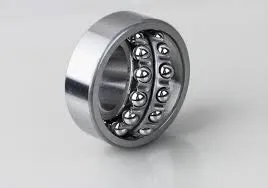
Nov . 11, 2024 05:13 Back to list
Single Row Spherical Roller Bearing Design and Applications for Enhanced Performance
Understanding Single Row Spherical Roller Bearings
Single row spherical roller bearings are a type of rolling element bearing designed to accommodate heavy radial loads and moderate axial loads in both directions. They are characterized by their unique design, which allows for self-alignment and the ability to handle misalignment resulting from shaft deflections or housing distortions. The spherical shape of the roller elements and inner ring raceway permits free movement within a certain range, making these bearings highly effective in various applications.
Design Characteristics
The single row spherical roller bearing comprises an outer ring with a concave raceway, moving spherical rollers, and an inner ring with two integral flanges. The spherical rollers can tilt freely within the raceway, facilitating the bearing's self-alignment capability. These components work together to ensure smooth rotation and high load-carrying capacity.
One of the noteworthy aspects is the roller design, which allows for a larger contact area with the raceways. This feature minimizes indentation and increases the bearing's life under heavy loads, making it ideal for applications where robustness is essential. Additionally, the roller arrangement permits the bearing to accommodate both radial and axial loads, providing operational versatility across various industries.
Applications
Single row spherical roller bearings are commonly used in applications like
- Heavy Machinery In industries such as mining, construction, and forestry, where machines operate under extreme conditions, these bearings offer the durability and load capacity required. - Wind Turbines The demanding operational environments of wind turbines make spherical roller bearings a suitable choice for rotor shafts, supporting high radial loads while allowing for misalignment due to wind-induced stresses. - Industrial Gearboxes These bearings are often incorporated into gearboxes, where they handle the combined effects of radial and axial loads resulting from gear meshing. - Cranes and Lifting Equipment Their robustness is ideal for cranes that require reliable performance under varying load conditions and potential misalignments.
single row spherical roller bearing

Advantages
One of the main advantages of single row spherical roller bearings is their self-aligning capability. This feature minimizes the effects of angular misalignment, which can occur due to manufacturing tolerances or operational conditions. By accommodating these misalignments, maintenance intervals can be extended, and the overall reliability of machinery improved.
Moreover, these bearings can operate at high speeds while maintaining stability. The optimized roller design reduces friction, enhancing their efficiency and performance. In applications where heat generation is a concern, the appropriate lubrication and material selection can further improve their operating temperature limits, allowing them to perform effectively under various conditions.
Maintenance and Life Expectancy
The longevity of single row spherical roller bearings largely depends on proper installation, alignment, and lubrication practices. Regular inspection and maintenance help to identify any potential issues before they develop into significant failures. It is crucial to ensure that they are adequately lubricated—using either grease or oil—to reduce friction and wear.
When selecting a single row spherical roller bearing for an application, it is essential to consider the specific conditions under which it will operate, including load types, speeds, and potential misalignment factors. This assessment ensures that the right bearing is chosen, ultimately optimizing performance and extending service life.
Conclusion
Single row spherical roller bearings play a critical role in various industrial applications due to their ability to handle substantial loads while providing self-alignment and accommodating misalignments. Their robust design and adaptable features make them a preferred choice in heavy-duty machinery and equipment. Understanding their functionalities, advantages, and proper maintenance practices helps industries harness their full potential, ultimately leading to improved efficiency and reduced downtime in operations.
Latest news
-
Durable Greenhouse Pillow Block Bearings for Reliable Ventilation
NewsAug.31,2025
-
Spherical Roller Bearings Applications: Heavy Duty, Self-Aligning
NewsAug.30,2025
-
Premium Deep Groove Ball Bearings | High Speed & Reliability
NewsAug.29,2025
-
Durable Scaffolding Clamps - Secure & Reliable Tube Connectors
NewsAug.28,2025
-
Common Failures in Thrust Ball Bearings and Solutions
NewsAug.22,2025
-
How Tapered Roller Bearings Can Take Shock Loads
NewsAug.22,2025
